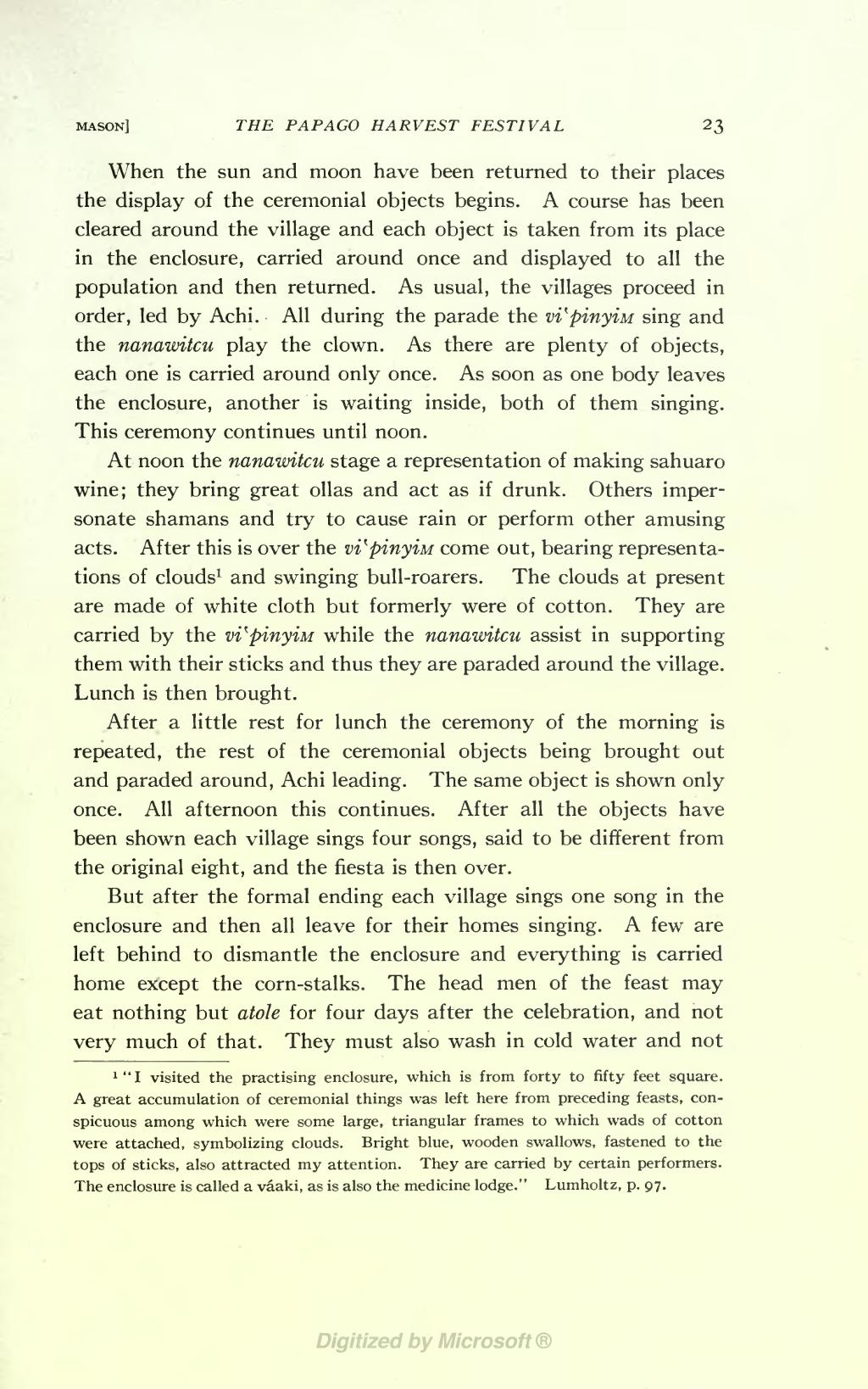MASON] THE PAP AGO HARVEST FESTIVAL 2$
When the sun and moon have been returned to their places the display of the ceremonial objects begins. A course has been cleared around the village and each object is taken from its place in the enclosure, carried around once and displayed to all the population and then returned. As usual, the villages proceed in order, led by Achi. All during the parade the vi^pinyiM sing and the nanawitcu play the clown. As there are plenty of objects, each one is carried around only once. As soon as one body leaves the enclosure, another is waiting inside, both of them singing. This ceremony continues until noon.
At noon the nanawitcu stage a representation of making sahuaro wine; they bring great ollas and act as if drunk. Others imper- sonate shamans and try to cause rain or perform other amusing acts. After this is over the vi^pinyiu come out, bearing representa- tions of clouds 1 and swinging bull-roarers. The clouds at present are made of white cloth but formerly were of cotton. They are carried by the vi^pinyiu while the nanawitcu assist in supporting them with their sticks and thus they are paraded around the village. Lunch is then brought.
After a little rest for lunch the ceremony of the morning is repeated, the rest of the ceremonial objects being brought out and paraded around, Achi leading. The same object is shown only once. All afternoon this continues. After all the objects have been shown each village sings four songs, said to be different from the original eight, and the fiesta is then over.
But after the formal ending each village sings one song in the enclosure and then all leave for their homes singing. A few are left behind to dismantle the enclosure and everything is carried home except the corn-stalks. The head men of the feast may eat nothing but atole for four days after the celebration, and not very much of that. They must also wash in cold water and not
1 "I visited the practising enclosure, which is from forty to fifty feet square. A great accumulation of ceremonial things was left here from preceding feasts, con- spicuous among which were some large, triangular frames to which wads of cotton were attached, symbolizing clouds. Bright blue, wooden swallows, fastened to the tops of sticks, also attracted my attention. They are carried by certain performers. The enclosure is called a vaaki, as is also the medicine lodge." Lumholtz, p. 97.
�� �
